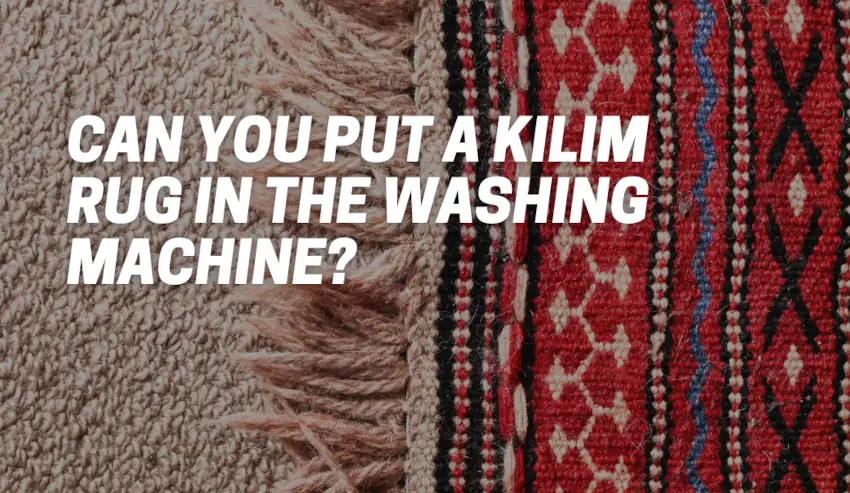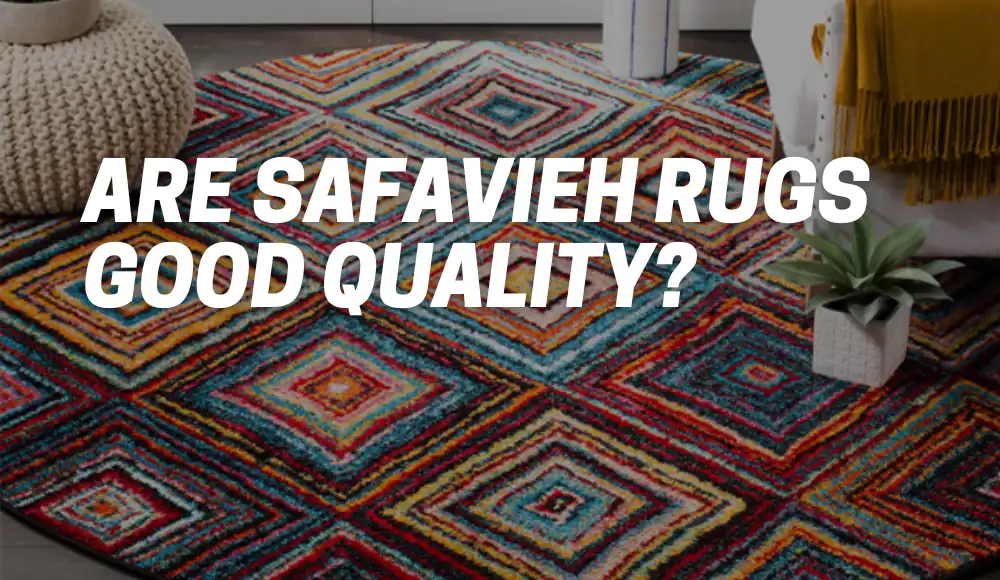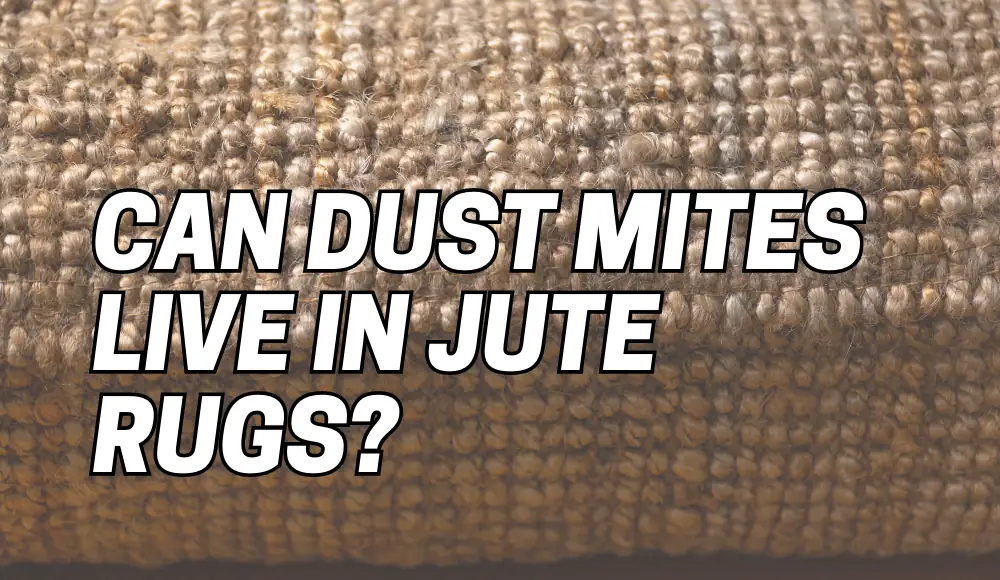Last updated on November 2nd, 2023 at 12:36 am
Kilim rugs, with their vibrant colors and intricate patterns, have become a popular choice for home decor enthusiasts and interior designers alike. These stunning handwoven textiles add a touch of culture and warmth to any space.
However, with their delicate fibers and unique craftsmanship, caring for a kilim rug requires some special attention.
In this article, we will delve into the world of kilim rugs, exploring what they are, how to properly care for them, and the age-old question: Can you put a kilim rug in the washing machine?
What is a Kilim Rug?
A kilim rug is a type of flat-woven textile that originated in the Middle East, Central Asia, and North Africa. These rugs are traditionally handcrafted by skilled artisans using a loom technique that creates a flat surface without any pile.
Kilim rugs are known for their bold geometric patterns, lively colors, and cultural significance.

Unlike pile rugs, kilims have no knotted structure, which makes them lightweight and reversible. The absence of a pile also means that kilim rugs are less prone to trapping dirt and debris, making them easier to clean in many cases.
Due to their durability and aesthetic appeal, kilim rugs have found their way into modern homes as stylish and functional decor pieces.
What Do I Need to Know About Kilim Rugs Before Washing?
Before you attempt to clean your beloved kilim rug, there are a few essential things you should keep in mind:
- Material Matters: Kilim rugs can be made from various materials, including wool, cotton, and silk. The choice of material influences the rug’s texture, appearance, and cleaning requirements. Always check the label or consult with a professional to determine the best cleaning method for your specific kilim rug.
- Colors and Dyes: The vibrant colors of kilim rugs are achieved through natural or synthetic dyes. Some dyes may not be colorfast, meaning they can bleed or fade when exposed to water or cleaning agents. Perform a colorfastness test on a small, inconspicuous area of the rug before attempting a full cleaning.
- Age and Condition: Older kilim rugs may be more delicate and susceptible to damage during cleaning. If your kilim rug is an antique or has sentimental value, it’s best to seek the expertise of a professional conservator to preserve its integrity.
- Regular Maintenance: Preventative care is crucial for kilim rugs. Regularly vacuuming the rug, rotating it to even out wear, and keeping it away from direct sunlight and moisture can extend its lifespan and maintain its beauty.
Are Kilim Rugs Hard to Clean?
The difficulty of cleaning a kilim rug depends on various factors, such as the rug’s size, material, and overall condition.
In general, kilim rugs are not inherently difficult to clean, but they do require a gentle touch and specific cleaning techniques to avoid damage.
Due to their flat-woven structure, kilim rugs are more flexible and can tolerate some cleaning methods that would be unsuitable for traditional pile rugs.
However, handwoven kilims can be more susceptible to unraveling if mishandled, which is why it’s essential to follow proper cleaning guidelines.
Can You Wash Kilim Rugs in the Washing Machine?
One of the most common questions about kilim rugs is whether they can be safely washed in a washing machine. The answer to this question is a bit tricky.
While some small kilim rugs made from sturdy materials like cotton or synthetic fibers may withstand a gentle cycle in the washing machine, this approach is generally not recommended for larger or delicate kilims.
The agitation and harsh conditions inside a washing machine can cause the rug’s fibers to stretch, fray, or lose their vibrant colors. Additionally, if the rug has any loose threads or damaged areas, the washing machine can exacerbate these issues.
Important Note: Before attempting to wash a kilim rug in the washing machine, always check the manufacturer’s care instructions and consider the rug’s condition. When in doubt, it’s safer to opt for handwashing or professional cleaning.
How to Wash a Kilim Rug
A kilim rug can be safely vacuumed, but it should never be subjected to machine washing or soaking in water. The colors used in kilim rugs are natural and can wash off if exposed to excessive water.
To clean your kilim properly, use a soft cloth or sponge moistened with a mixture of cold water and vinegar for gentle cleaning. Avoid using harsh chemicals on your kilim.
If you accidentally spill something on the rug, press a cloth onto the spot to absorb the liquid. For dried residue, use a brush to gently scrub it and then vacuum the remaining dirt.
To ensure even wear, rotate your kilims from time to time. Remember never to clean a kilim in a washing machine or dryer. The best way to wash a kilim is outdoors on grass or gravel using cold water from a hose.
Avoid washing it on a flat surface to allow proper water drainage and prevent over-soaking, which could cause the colors to run.
Handwashing Method
Handwashing is the preferred method for cleaning most kilim rugs, as it allows for better control and prevents unnecessary stress on the fibers.
Here’s a step-by-step guide to handwashing your kilim rug:
- Prepare the Rug: Take the kilim rug outside and shake it gently to remove loose dirt and debris. Lay the rug on a clean, flat surface.
- Spot Cleaning: Treat any stains or spots using a mild detergent or a mixture of water and vinegar. Always test the cleaning solution on a small area first to avoid any discoloration.
- Handwash with Care: Fill a large tub or basin with lukewarm water and add a small amount of gentle detergent. Submerge the rug in the water and use a soft brush or cloth to gently clean the surface. Avoid scrubbing vigorously to prevent damage.
- Rinse Thoroughly: Once you’ve finished cleaning, drain the soapy water and refill the tub with clean water. Rinse the rug thoroughly to remove any remaining detergent.
- Remove Excess Water: Gently press the rug to remove excess water, but avoid wringing or twisting it, as this can distort the fibers.
- Dry Properly: Lay the kilim rug flat on a clean, dry surface to air dry. Avoid hanging it, as the weight of the wet rug may cause it to stretch.
- Fluff and Brush: Once the rug is dry, fluff the fibers with your hands and use a soft brush to restore its texture and appearance.
—
How to Clean Old Kilim Rugs
Older kilim rugs, especially antiques, require extra care and attention during cleaning.
These delicate pieces may have weakened fibers or loose threads that can be further damaged by traditional cleaning methods. To clean an old kilim rug, consider the following steps:
- Dust and Gently Shake: Take the rug outside and gently shake it to remove loose dirt. Use a soft brush or a vacuum cleaner with a gentle attachment to remove dust from the surface.
- Avoid Wet Cleaning: For fragile or antique kilim rugs, wet cleaning is generally not recommended. Instead, opt for dry cleaning methods or consult with a professional conservator.
- Use Dry Cleaning Agents: Dry cleaning powders or foam-based solutions can be applied to the rug’s surface to absorb dirt and oils. Follow the product instructions and use sparingly.
- Consult a Professional: When dealing with a valuable or aged kilim rug, it’s best to seek the advice of a professional conservator or rug cleaning expert. They have the expertise and experience to handle delicate textiles without causing damage.
Useful Information:
- Kilim Rug Cleaning Frequency: Kilim rugs should be professionally cleaned every 1-2 years to maintain their appearance and extend their lifespan.
- Colorfastness Test: To test if the dyes in your kilim rug are colorfast, dampen a white cloth with water and gently rub it on a small, inconspicuous area of the rug. If the colors bleed onto the cloth, avoid using water-based cleaning methods.
FAQs
What Rug Material is Machine Washable?
While most rug materials are not suitable for machine washing, some machine-washable rug options include:
- Cotton Rugs: Cotton rugs are one of the most machine-friendly options. They can often withstand gentle cycles and be air-dried to maintain their quality.
- Synthetic Rugs: Rugs made from synthetic materials like polyester or nylon can handle machine washing, but always check the care instructions first.
- Bathroom Rugs: Small bathroom rugs, often made from cotton or microfiber, are generally designed for machine washing due to their frequent exposure to moisture.
However, it’s essential to read the care label and follow manufacturer guidelines to ensure safe and effective machine washing for any rug material.
Always remember that delicate or valuable rugs, like kilim rugs, are typically better suited for handwashing or professional cleaning to prevent damage.
Conclusion
Kilim rugs are not only captivating pieces of art but also valuable additions to any home decor. While cleaning and maintaining these handwoven treasures may seem daunting at first, with the right knowledge and approach, you can ensure their longevity and beauty for years to come.
Remember, handwashing is generally the safest method for cleaning kilim rugs, but if you decide to use a washing machine, proceed with caution and only do so for small, sturdy kilims. Always take the rug’s material, condition, and age into account before attempting any cleaning method.
By treating your kilim rug with care and respect, you’ll not only preserve its intricate patterns and vibrant colors but also honor the craftsmanship and culture behind these timeless textiles.


